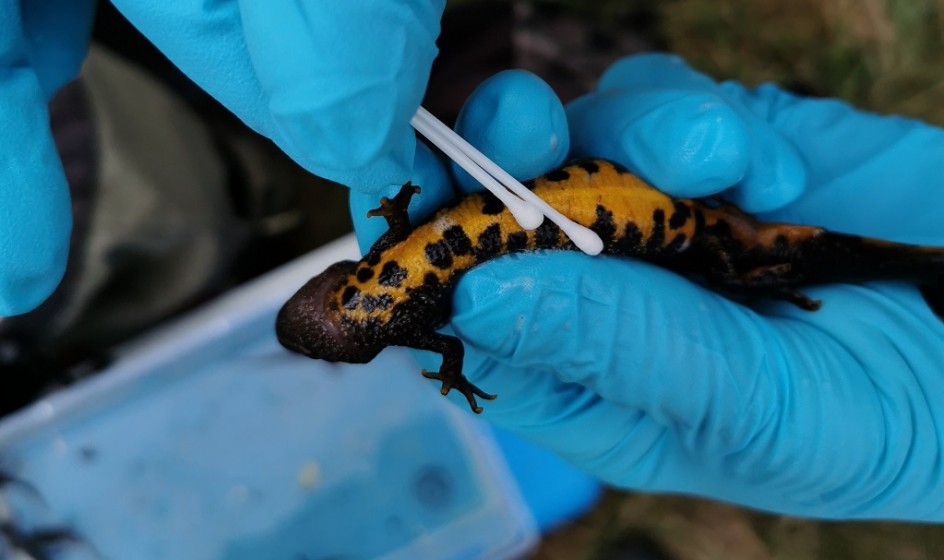

Salamader Plague and Native newts
The salamander plague as a threat to newt species compositions - Monitoring of native newt populations in the Eifel National Park with special focus on the great crested newt (Triturus cristatus)
For almost ten years now, the fire salamander (Salamandra salamandra) has been declining due to a newly emerging threat, the salamander plague. This disease is caused by a pathogen, the chytrid fungus Batrachochytrium salamandrivorans (Bsal). To date, the salamander plague is known to affect populations in Germany (Eifel, Ruhr district, Bavaria), the Netherlands, Belgium and Spain, with 70 outbreaks solely registered in Germany.
Infection experiments showed that the majority of salamandrid species (salamander and newts) are highly sensitive to the fungus. Apart from the fire salamander, studies concerning the effects of Bsal on native newt species are rare. Stegen et al. 2017 showed that the Alpine newt (Ichthyosaura alpestris) can recover from Bsal and assumed that this species can act as a reservoir and vector. The same is suspected – but not proven – for both smooth and palmate newts (Lissotriton vulgaris, L. helveticus). In contrast, the salamander plague seems to affect the northern crested newt (Triturus cristatus). It is assumed that this species shows alarming population declines since the Spanish marbled newt (Triturus marmoratus), which belongs to the same genus, suffered severe population declines due to Bsal.
Since previous investigations only focussed on Bsal – fire salamander, there is an urgent need to include newts into Bsal research. Therefore, in 2020 the project team initiated a first capture-recapture study for the great crested newt, the alpine newt and the smooth newt at two Bsal-positive sites in the Eifel National Park. These data can serve as a basis to study their population dynamics in relation to Bsal.
The study aims to investigate when a bsal infection occurs, if and how it affects the survival rates of animals and if newts can host the fungus and infect others. The project is conducted in close cooperation with the Eifel National Park authority and set up as a long-term monitoring programme for news at this site.
Project aims:
- Investigation of the occurence of bsal, its distribution and host interactions with the local populations of Triturus cristatus, Lissotriton vulgaris und Ichthyosaura alpestris in Eifel National Park
- Establishment of a long-term monitoring programme for these newt species at Eifel National Park
Planned activities
- Establishing a photo database of individuals, collecting data on sex ratio and morphometric data (e.g. snout-vent length) of the populations at Eifel National Park
- Calculating Scaled Mass Index (SMI) as Condition Index (CI) as an indicator for individual health of the newts
- Determining the species- and site-specific Bsal infection prevalence (external symptoms of bsal infection, skin swabs, PCR tests)
- Determining the bsal dependent species-specific and site-specific survival rates in 2020-2021 and calculation of survival probabilities
- Determining bsal water loads throughout the year by weekly and monthly e-DNA sampling (environmental DNA)
- Presentation of results at scientific conferences and publications in scientific journals
This project is funded by Munich Zoo Hellabrunn.
Projekt partner: Trier University